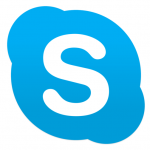
Jordan Levy, PhD
Anthropology Department
Using Skype for a “Meet the Author” Virtual Classroom Visit

Jordan Levy is an Assistant Professor of Anthropology who teaches courses on Latin America and Ethnography of the State – topics inspired from his ongoing research in Honduras following the 2009 coup d’état. His classes involve exposing students to a range of perspectives in current literature on these subjects and spending time discussing the ethnographic substance and theoretical orientations of each author’s arguments. He found that inviting an assigned author to a virtual classroom visit via Skype was one very effective way to meet these pedagogical aims.
What is one instructional strategy or student project that is particularly effective, innovative, or engaging?
“My current IHON 258 course, “Ethnographic Perspectives on State Formation,” functions more like a seminar than a lecture-based class. During each session we sit down together in a round-table fashion and discuss a given topic and/or piece of literature together as a group. I consider our Skype conversation with the author of this book as a great opportunity to enhance this same pedagogical strategy through the use of technology, and to ask students to demonstrate their knowledge of the book and the author’s arguments. Few authors we read live close enough to physically come visit our classes, and everyone is incredibly busy. But many people can find a half hour or so for a Skype call, which is free and far more engaging than a telephone conference call.”
What supportive technology do you use to implement this strategy/project?
“Any video chat application could work. I also like to use FaceTime, but Skype is more common for everyone who doesn’t have a Mac. I wanted the students to be able to see, hear, and talk with the author, so I connected my laptop to the projector screen, plugged in the speakers, and checked-out a portable web cam on a tri-pod with a built-in microphone and a long cord. This allowed the author to see each student and for me to bring the camera and microphone closer to each student when she had a question during our conversation.”
What are the benefits, for you and your students, of using this strategy or tool?
“While students can decipher the author’s main arguments in the reading itself, talking with the author about the substance of her work reveals new information about the process of doing the research and writing the book, which students could not have otherwise received just by reading it or talking about it in class. In this sense there is certainly a benefit for them to “meet the author.” The author herself also wrote to me afterward about how much she enjoyed the opportunity to talk with PLU students about her research, and to see how the book is being received among undergraduate students. As the instructor, I was able to see how well students understood the concepts they learned about in the book. I also now have new material that we all received together directly from the author, which I can refer back to later in the semester.”
What advice would you have for someone interested in trying this strategy or tool?
“It’s a good idea to arrive as early as possible to get set up and run a test call before class starts. What I did, and found useful, is to schedule the call to begin at least fifteen minutes after the beginning of class, and to end at least fifteen minutes before the class leaves. This way you have some time to talk with the students about the subject before and after the call. What I also found helpful was compiling students’ questions and sending them to the author a few days beforehand. Thus rather than answer them one by one in the moment, I was able to ask her to instead focus on how she came to do this research, the writing process, and to address the questions throughout our discussion. This led to an engaging and coherent conversation with the students, and left time for their follow-up questions.”



